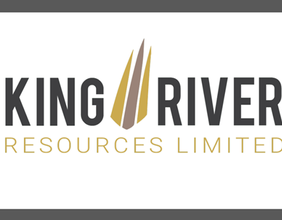Highlights:
- A tariff is a tax imposed on imported or exported goods to regulate trade.
- Tariffs are used by governments to protect domestic industries and generate revenue.
- They can lead to higher prices for consumers and affect international trade relations.
A tariff is a tax levied by a government on goods and services imported or exported across its borders. Often used as a tool to manage trade balances, protect domestic industries, and generate revenue, tariffs have been central to economic policy for centuries. They can have significant impacts on both the domestic economy and international trade relations, influencing prices, competition, and the flow of goods between countries.
What Are Tariffs?
At their core, tariffs are taxes imposed on imported goods or, less commonly, on exports. These taxes can take various forms, including specific tariffs (a fixed fee per unit or quantity of the imported good) or ad valorem tariffs (a percentage of the value of the goods). Tariffs are typically used by governments to regulate trade flows and protect domestic industries from foreign competition. When a country imposes tariffs on imports, the cost of those imported goods increases, making them less competitive compared to locally produced goods.
How Do Tariffs Work?
- Import Tariffs: When a government imposes an import tariff, the price of foreign goods rises. This makes domestic goods more attractive to consumers, which benefits local producers. However, the increased price of imports often leads to higher costs for consumers and businesses that rely on foreign goods for manufacturing.
- Export Tariffs: Although less common, export tariffs are taxes on goods leaving a country. They are typically used by countries that are rich in certain natural resources or commodities and want to control their exports to maximize domestic supply or stabilize prices.
- Customs Duties: Tariffs are sometimes referred to as customs duties, as they are typically collected by customs authorities when goods cross a border. The duties vary by the type of goods being traded, their value, and the country of origin.
Types of Tariffs
- Specific Tariffs: A specific tariff is a fixed fee imposed on a particular quantity of goods. For example, a country might charge $5 for every ton of steel imported. Specific tariffs are easy to administer but can become less effective if the price of goods fluctuates.
- Ad Valorem Tariffs: These tariffs are calculated as a percentage of the value of the imported goods. For example, a 10% tariff on a car worth $20,000 would result in a $2,000 tariff. Ad valorem tariffs are more flexible as they automatically adjust to changes in the price of goods.
- Compound Tariffs: Some countries use a combination of specific and ad valorem tariffs. For example, a product might be subject to both a fixed fee and a percentage of its value. This is often used for more complex or high-value goods.
Reasons for Imposing Tariffs
Governments impose tariffs for various economic and political reasons:
- Protecting Domestic Industries: One of the primary reasons for imposing tariffs is to protect local businesses from foreign competition. By making imported goods more expensive, tariffs encourage consumers to buy domestically produced products, fostering local industries and protecting jobs.
- Raising Revenue: Tariffs are also a source of revenue for governments. This was particularly important historically, before the establishment of more complex tax systems. Even today, some developing countries rely heavily on tariff revenues to fund government operations.
- Correcting Trade Imbalances: Tariffs can be used to reduce trade deficits. When a country imports more than it exports, the imposition of tariffs on imports can help reduce the volume of foreign goods entering the market, thereby balancing trade and supporting domestic industries.
- Political Leverage: Tariffs are sometimes used as a tool of political strategy in international relations. A country might impose tariffs to retaliate against trade practices that it views as unfair, or to pressure another nation to change its policies, such as labor standards, environmental protection, or intellectual property enforcement.
- National Security: Some tariffs are imposed on products that are deemed critical for national security, such as military equipment or sensitive technology. This is done to ensure that these strategic goods are produced domestically rather than relying on foreign sources.
The Effects of Tariffs
While tariffs can have certain economic benefits, they also come with significant drawbacks:
- Increased Costs for Consumers: The most immediate impact of tariffs is that they raise the price of imported goods. This can lead to higher costs for consumers, especially if they rely on foreign products for everyday use. As businesses pass on the higher costs to consumers, it can contribute to inflationary pressures.
- Disruption of Supply Chains: For industries that rely on global supply chains, tariffs can disrupt the flow of materials and goods. Companies may face higher costs for raw materials, components, or finished products imported from other countries. This can lead to inefficiencies in production and even force companies to shift operations to other countries to avoid high tariffs.
- Retaliation and Trade Wars: Tariffs often lead to retaliatory actions from trading partners. If one country imposes tariffs on another, the affected country may retaliate by imposing tariffs of its own. This tit-for-tat escalation can lead to a trade war, where both countries impose a series of tariffs on each other's goods, leading to economic inefficiencies and harm to global trade.
- Impact on International Relations: The imposition of tariffs can strain diplomatic relations between countries, especially if they are perceived as unfair or politically motivated. Trade negotiations often become more difficult, and tensions can rise, affecting not only trade but also cooperation on other global issues.
- Reduced Economic Efficiency: Economists generally argue that tariffs reduce the overall efficiency of the global economy. By distorting market prices and encouraging the consumption of less efficient, domestically produced goods, tariffs can lead to a misallocation of resources. While they may help certain industries, the economy as a whole may suffer as a result of less competition and higher prices.
Examples of Tariffs in Practice
- U.S. and China Trade War: One of the most high-profile examples of tariffs in recent history occurred during the trade war between the U.S. and China. In 2018 and 2019, both countries imposed tariffs on hundreds of billions of dollars' worth of each other's goods. While the U.S. aimed to address issues such as intellectual property theft and trade imbalances, China retaliated with its own tariffs. The trade war led to disruptions in global supply chains, higher costs for consumers, and slower economic growth in both countries.
- The European Union's Agricultural Tariffs: The European Union (EU) has historically imposed high tariffs on agricultural products such as sugar, dairy, and meat imports. These tariffs are intended to protect European farmers from cheaper imports, but they have been a point of contention in trade negotiations with countries like the U.S., which advocates for more open agricultural markets.
- Tariffs on Steel and Aluminum: In 2018, the U.S. imposed tariffs on steel and aluminum imports from several countries, including China, the European Union, and Canada. These tariffs were justified on national security grounds but also had the effect of protecting U.S. manufacturers from foreign competition. The decision led to retaliatory tariffs and sparked debates over the long-term benefits and costs of such trade measures.
Conclusion
Tariffs are an important and complex tool in the regulation of international trade. While they can provide benefits like protecting domestic industries, raising revenue, and correcting trade imbalances, they also come with significant downsides, such as higher consumer prices, disruptions in global supply chains, and the potential for trade wars. Governments must carefully weigh these costs and benefits when deciding whether to impose tariffs and how to structure them.
As global trade becomes increasingly interconnected, the impact of tariffs extends far beyond the borders of any one nation. Understanding the economic and political consequences of tariffs is crucial for businesses, policymakers, and consumers alike, as they navigate the ever-changing landscape of international trade.





_02_05_2025_05_53_40_418159.jpg)
